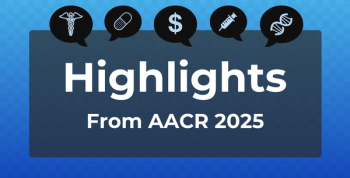
Study Characterizes Oro-Dental Anomalies in Loeys-Dietz Syndrome
The severity of oro-dental anomalies in patients with Loeys-Dietz syndrome segregates by gene mutations, according to a study published in the Journal of Medical Genetics.
The severity of oro-dental anomalies in patients with Loeys-Dietz syndrome (LDS) segregates by gene mutations, according to a
LDS is a
By examining the oro-dental features of 40 patients with LDS, from 5 subtypes, the researchers were able to assess the most severely affected subgroups.
“This extensive characterization, as well as some identified distinguishing features, can significantly aid dental and medical care providers in the diagnosis and clinical management of patients with this rare connective tissue disorder,” the researchers said.
The presence of a high-arched and narrow palate and enamel defects were the most common oro-dental manifestations among patients. Additional common characteristics included bifid uvula, submucous cleft palate, malocclusion, dental crowding, and delayed eruption of permanent teeth.
Researchers found, “Patients with TGF-β receptor II mutations [LDS2 subtype] presented with the most severe enamel defects, followed by patients with TGF-β receptor I mutations [LDS1 subtype]. LDS2 patients had a higher frequency of oro-dental deformities in general.” For this reason, the researchers concluded LDS2 has the most severely affected phenotype.
Less common oro-dental features among patients with LDS included presence of a bifid or broad uvula or submucous cleft, deep bite, dental crowding, and abnormal eruption pattern with a delay in the eruption of the permanent teeth.
Many rare diseases and genetic conditions have phenotypic manifestations presenting as dental anomalies. However, the researchers note this symptom is likely under-reported “as oro-dental anomalies and their impact on patients’ quality of life are often time overlooked as they are found in combination with other, more life-threatening, clinical manifestations.”
This study is the first of its kind to characterize common and distinguishing features of LDS subtypes. The authors note that future studies are needed on the ultrastructure and biomechanical properties of dental tissues from patients with LDS, in order to improve understanding of molecular and cellular mechanisms that lead to oro-dental anomalies.
Reference
Jani P, Nguyen QC, Almpani K, et al. Severity of oro-dental anomalies in Loeys-Dietz syndrome segregates by gene mutation [published online March 8, 2020].
J Med Genet. doi: 10.1136/jmedgenet-2019-106678.
Newsletter
Stay ahead of policy, cost, and value—subscribe to AJMC for expert insights at the intersection of clinical care and health economics.









































